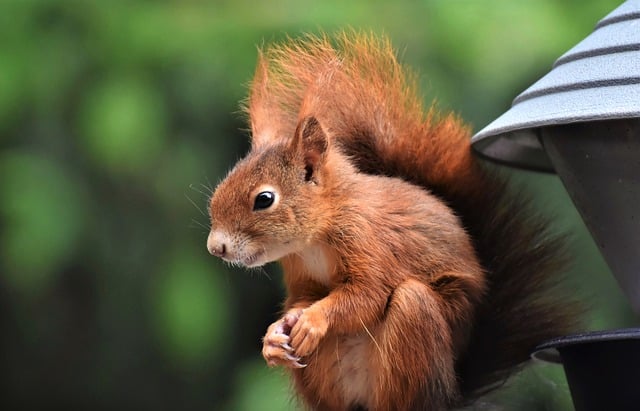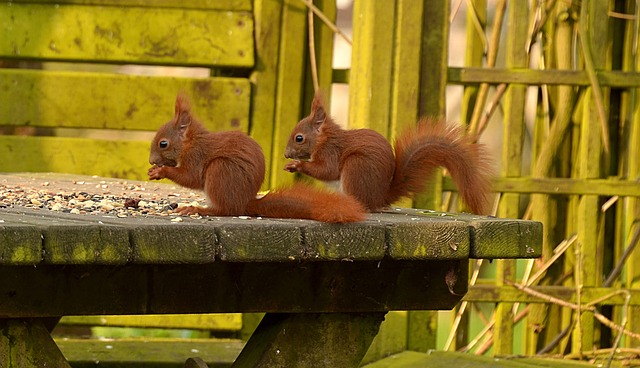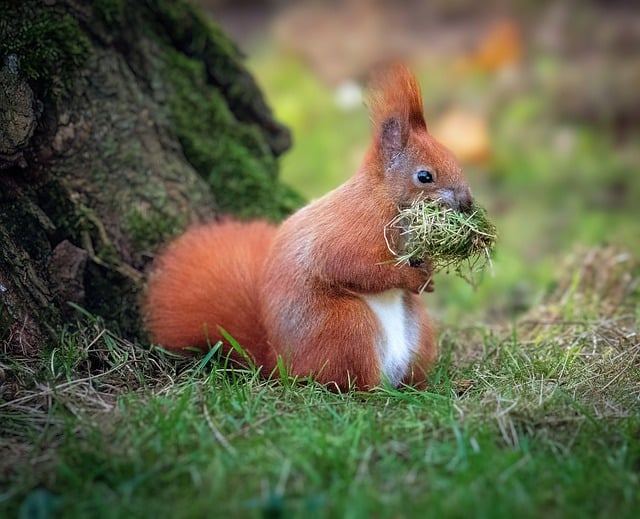Have you ever come across a fatherless newborn squirrel? Yes, it is very likely that such a thing will come across you and perhaps you will have to take care of it and raise it as an adult squirrel. Raising wild animals is very complicated and usually much more difficult, as well as dangerous, than raising animals that have been domesticated from birth. However, it is something that is completely doable. Give your squirrel the right food and living conditions and it will thrive in your home!
Contents
Newborn squirrel living space
Find a box about 0.1 square meter in size. A cat carrier, a large tupperware box (without a lid) or any other container will do. Place a soft fabric in the bottom of the container, being careful not to use a towel as newborn squirrels can easily wrap their paws around the coils on the towel.

We are going to put on thick leather gloves (just in case) and gently pick up the baby squirrel. At this time take care to check its body for bruises, bugs, blood, lumps or cuts. If it’s bleeding or you notice it has broken bones or serious injuries, take it to the vet as soon as possible.

Keep your newborn squirrel warm
Get a heating pad or electric blanket. Liquid heating pads that contain water inside keep it warmer. If the heating pad is turned up to the highest temperature, the baby can get burned because he or she can’t move his or her body in time. Therefore, depending on the model, set the heating pad or blanket to a lower temperature to ensure that the temperature is appropriate. Place the container halfway up the heating pad so that the newborn squirrel will crawl elsewhere if the temperature is higher.

Keep newborn squirrels at about 37 degrees. Since they are still young animals not able to warm themselves, they need heat. Always make sure that the inspection container and the squirrels themselves don’t get too hot. Some heating pads will turn themselves off after a few hours of operation, so check from time to time to make sure the pad is still working. Place a towel on top of the container to prevent heat loss inside the container. If it is the middle of summer, you may not need to place a towel on top.

If you don’t have a heating pad or electric blanket, you can use a hot water bottle, but wrap it in a towel. Do not allow the squirrel’s skin to touch the bottle to prevent burns.

How to feed a newborn squirrel
Newborn squirrels or more than 20 days more than 30 days of the rat is recommended to feed every 2-3 hours, in the middle of the night also have to get up to feed Oh. We need to use a syringe or special bottle, a little bit of slow feeding, pay attention not to feed too quickly or may choke, choking is very easy to pneumonia, milk squirrels pneumonia is very easy to hang! Drink until he doesn’t want it anymore. Don’t feed too much on the first day at home, because the child needs to adapt to the environment on the first day at home. Some children eat a lot, some children eat a little, this is very normal, do not need to make a fuss.

Prevent your newborn squirrel from becoming dehydrated
Most newborn squirrels that get down are likely to be in dire need of rehydration. You can gently pinch their skin and this will tell you how dehydrated they are. If the bulge on a baby squirrel’s back stays still for a second or more, then they are dehydrated.

If their skin looks wrinkled, their eye sockets are sunken, or they have lost weight, then they are in a state of dehydration. Most supermarkets and drugstores have electrolyte water or their own brand of oral baby rehydration solution in the baby medication section. Squirrels like fruit flavors, but it is possible to purchase oral liquids if supermarkets and pharmacies only have the original flavor. If you don’t have a store or pharmacy near your home, you can also make your own at home by:
- Prepare one tablespoon of table salt
- Prepare three tablespoons of sugar and add it to 1 liter of hot water.
- using an oral syringe, such as a syringe without a needle, of course, you can also use a clean eye dropper or a baby oral syringe. You can find cavity syringes in pet supermarkets as well as pet markets.

You should make sure your baby squirrel is warm before giving him any liquids, otherwise he won’t be able to absorb them. If the baby is pink in color, has sparse fur and is five to eight centimeters long, you have to be extra careful when feeding them liquids. If you’re not careful you can suck fluid from your baby’s body cavity and it can also get into their lungs. This can cause them to develop pneumonia and even kill them. Just put a small drop of liquid on their lips, one at a time, and let them suck on it.

If their eyes are open, you can get them to hold the syringe and gently give a few drops at a time. If a lot of liquid comes out of their mouth or nose, you should quickly remove the syringe. If you notice liquid coming out of their nose, immediately turn them upside down, hold the position for ten seconds, and then suck the liquid out of their nose, in their nostrils. Leave a few minutes between each action.

Make sure the liquid you give is warm and not too hot. Subsequently store any liquid that you have not finished feeding in the fridge. If they don’t drink it, you can put a drop on their lips or stick a drop in their mouth, which will give them a taste first. Some babies will then open their mouths wide and start sucking. Pink babies with closed eyes can be given one milliliter of fluid every two hours; hairy babies with closed eyes should be given 1-2 milliliters of fluid every two hours; and babies with open eyes should be given 2-4 milliliters of fluid every three hours until they are adopted by the Rehabilitation Center. (One milliliter is equivalent to 20-25 drops of fluid from an eye dropper; five milliliters are equivalent to a teaspoonful.)

As a rescuer, you will have to take care of newborn squirrels until they are able to feed themselves. You should then teach them how to eat soft and hard foods. When they are able to feed themselves, you should take them out of their indoor cage and put them outdoors in a large 20cm high cage. They will be able to learn how to find food, build squirrel nests, climb, jump and socialize with other juvenile squirrels. When they reach four and a half to five months old, it’s time to let them move around three kilometers from where they were found, your backyard if you like. Place them in a nest box outdoors and hang the box from a tree or post. After a few days, they will leave the nest box and build their own nest. In the meantime, they will learn to find food and take care of themselves.